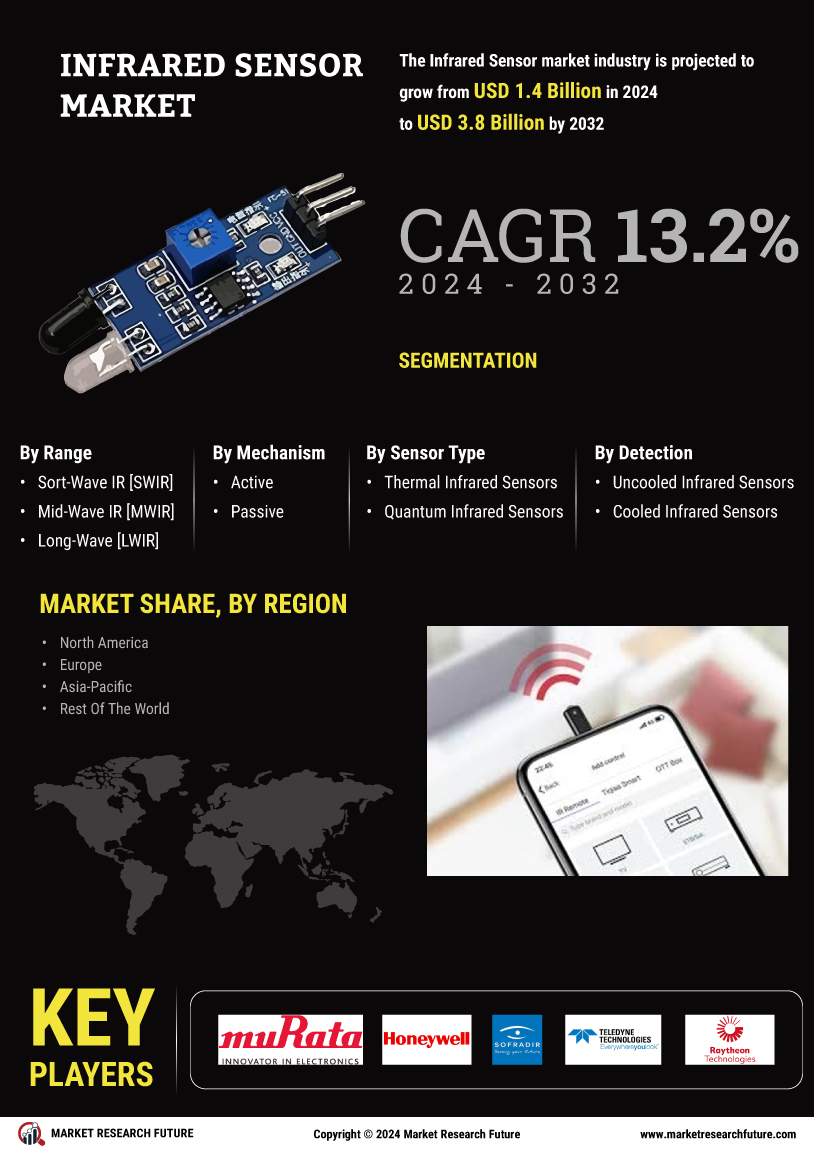Rising Demand for Automation
The increasing demand for automation across various sectors appears to be a pivotal driver for the Infrared Sensor Market. Industries such as manufacturing, healthcare, and security are increasingly adopting automated systems that rely on infrared sensors for monitoring and control. For instance, the market for industrial automation is projected to reach USD 300 billion by 2025, indicating a robust growth trajectory. Infrared sensors play a crucial role in these systems by providing accurate data for process optimization and safety. As organizations seek to enhance operational efficiency and reduce human error, the reliance on infrared sensors is likely to intensify, thereby propelling the market forward.
Surge in Consumer Electronics
The surge in consumer electronics, particularly in smart home devices, is contributing to the growth of the Infrared Sensor Market. As consumers increasingly seek convenience and automation in their homes, infrared sensors are being integrated into various devices such as smart thermostats, security cameras, and remote controls. The Global Infrared Sensor Market is expected to reach USD 174 billion by 2025, with infrared sensors playing a crucial role in enhancing user experience and energy efficiency. This trend indicates a growing acceptance of infrared technology in everyday applications, which is likely to drive market expansion.
Advancements in Sensor Technology
Technological advancements in sensor design and functionality are significantly influencing the Infrared Sensor Market. Innovations such as improved sensitivity, miniaturization, and integration with smart technologies are enhancing the performance of infrared sensors. For example, the development of uncooled infrared sensors has made them more accessible and cost-effective, expanding their application range. The market for infrared sensors is expected to grow at a CAGR of 10% from 2025 to 2030, driven by these technological improvements. As industries increasingly adopt sophisticated sensor technologies, the demand for infrared sensors is anticipated to rise, further solidifying their role in various applications.
Growing Focus on Safety and Security
The heightened emphasis on safety and security measures across multiple sectors is a significant driver for the Infrared Sensor Market. With rising concerns over security threats, organizations are investing in advanced surveillance systems that utilize infrared sensors for enhanced detection capabilities. The Global Infrared Sensor Market is projected to reach USD 500 billion by 2025, with infrared sensors being integral to these systems. Their ability to detect heat signatures and movement in low-light conditions makes them invaluable for security applications. As the need for robust security solutions continues to grow, the demand for infrared sensors is likely to increase correspondingly.
Environmental Regulations and Sustainability
The increasing focus on environmental regulations and sustainability is emerging as a key driver for the Infrared Sensor Market. Governments worldwide are implementing stringent regulations aimed at reducing energy consumption and emissions, which is prompting industries to adopt energy-efficient technologies. Infrared sensors are instrumental in monitoring energy usage and optimizing processes, thereby contributing to sustainability goals. The market for energy-efficient technologies is projected to grow significantly, with infrared sensors being a vital component. As organizations strive to comply with environmental standards, the demand for infrared sensors is expected to rise, further propelling market growth.

















Leave a Comment